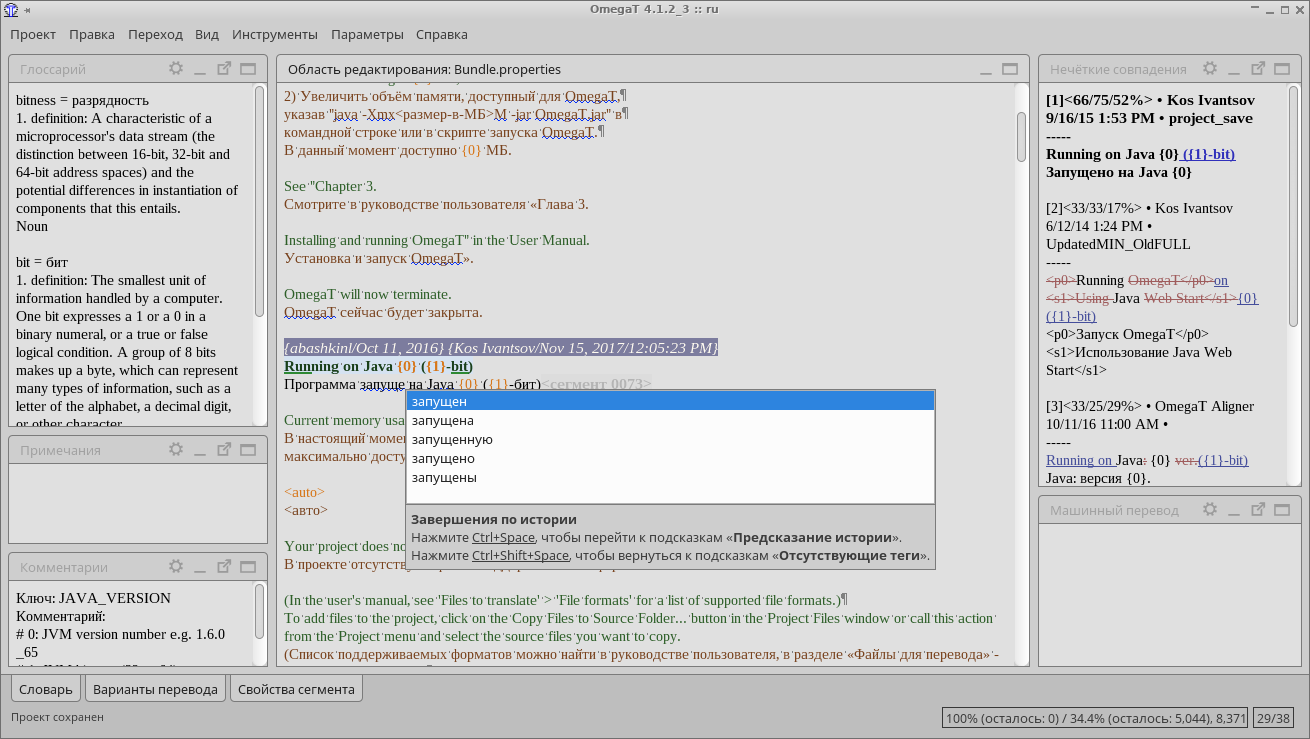

Unlike machine translation, which suggests possible translations, it’s up to the professional translator to look at the context of the new translation to see if there’s a possible fit.
Use tmx files omegat software#
Most translation memory software supports multiple file formats, so it stores information regardless whether you’re using Microsoft Word, HTML, or something else. This allows translators to easily pick and choose terms that are already translated in the course of moving between different languages. 101% matching is when the text of a string matches the text of a string and the context in the translation memory.Fuzzy match looks for phrases and sequences of words within a translation memory database that aren’t 100% exact, but a translator can make a judgement call based on the context whether or not to use the translation.Exact match looks for phrases and sequences of words within a translation memory database that are 100% of a match, meaning it’s likely to be re-used.When performing concordance searches within translation memory databases, you’ll find three types of matches: This way, your previous translations will always be ready to use again. Everything that you (or any other team members) type into an editor, upload or set via an API is saved automatically in the translation memory for future translations. Translation memory (TM) software is a database of sentences, or segments of texts and their translations that can be automatically reused when translating similar or identical content in your translation projects. Other features of CAT tools include a glossary or terminology management, also known as a termbase, which you can learn more about here. Provide a database which you can analyze to determine number of words translated in a given project, calculating cost and turnaround time.Ensure consistent and high-quality translations across projects.A subset of computer-assisted translation (CAT) tools, translation memory helps to: Today, most translation software options are part of larger translation management systems. Most of these scripts require MS Windows, although some procedures may also work on other platforms.The secret weapon for any professional translator? Translation memory software. GUI alignment tool for producing translation memory files from legacy texts and their translations.Īn intelligent command-line alignment tool for producing translation memory files from legacy texts and their translations.ĭescriptions of and links to Samuel Murray's scripts/procedures. Enables a number of file formats to be translated which cannot be handled natively in OmegaT. Online repositories of spelling dictionaries for use within OmegaT.įree (compatible) alternatives to Microsoft Office.Ī comprehensive suite of utilities for preparing files for translation in a CAT tool. Third-party software Third-party software for use with OmegaT Spelling dictionaries The files of this site, in a convenient package for those wishing to localize it. TMX files of localizations of the OmegaT documentation and of this site, for use by localizers. Localization resources Localization TMX repository Selection of alternative icons for use with OmegaT.
Use tmx files omegat manual#
Student's manual with instructions to trainers for adaptation, and Wordfast to a form which can be read by OmegaT. Contributed by Marc Prior.Ĭonverts translation memories in TMX format generated by Requires Linux, w3m and tcl/tk (both generally supplied with Linux). computer source code) for translation in OmegaT. Script for extracting text for translation from plain-text files (e.g.

Other users are advised to use the Okapi Filters Plugin instead. This collection of scripts may be useful to scripters with a knowledge of tcl/tk. Utility for converting Trados TagEditor (TTX) files to an intermediate format, enabling them to be translated in OmegaT. Segment or in which the target segment is identical to the source

Translation units from a TMX file: deletes all TUs without target Java command-line script for removing "superfluous" Java command-line script for merging two or more TMX files. Important: listed plug-ins work with OmegaT version 4 and above. Provides functionality to read EPWING dictionary format. The TexTra API is freely provided by NICT, Integrates the TexTra neural machine translation engine into OmegaT. Website support can be scripted in Groovy. Integrates the Apertium machine translation functionality into OmegaT.įast access to websites. Provides filters for handling further file formats, including Trados TTX, and Markdown. Other OmegaT resources Plug-ins Okapi Filters Plugin


 0 kommentar(er)
0 kommentar(er)
